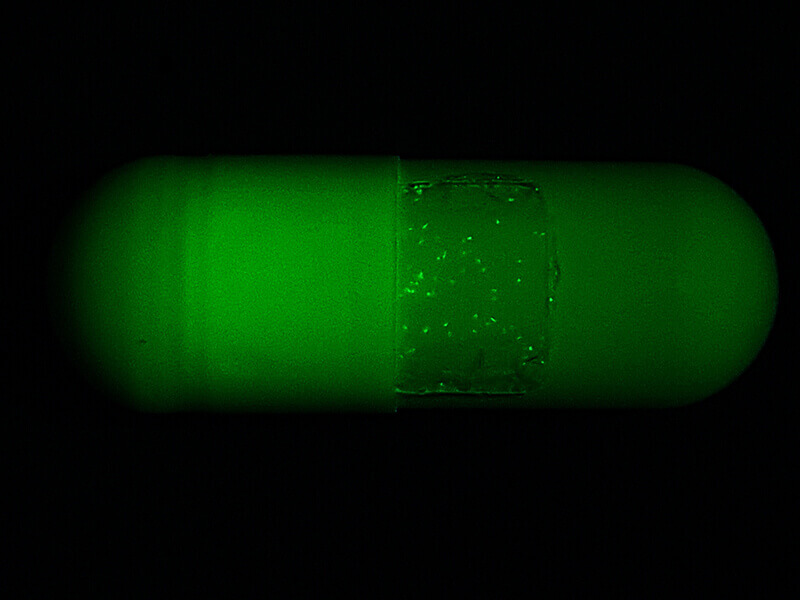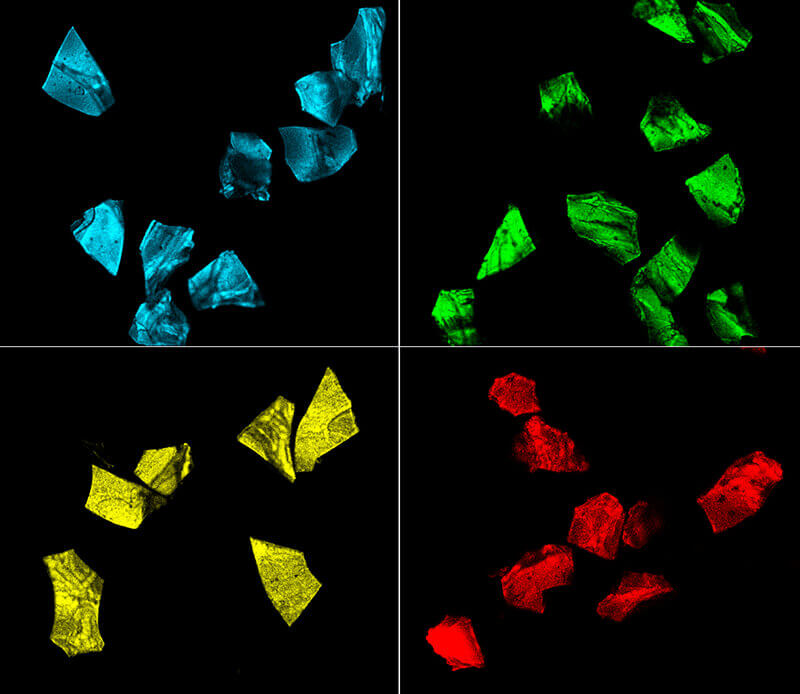 Researchers have created a silk film "security tag" to go on the surface of drug capsules. The photo was taken with a green filter for visibility. (Purdue University photo/Jung Woo Leem)
Researchers have created a silk film "security tag" to go on the surface of drug capsules. The photo was taken with a green filter for visibility. (Purdue University photo/Jung Woo Leem) WEST LAFAYETTE, Ind. — Manufacturing prescription drugs with distinct markings, colors, shapes or packaging isn't enough to protect them from counterfeiting, U.S. Drug Enforcement Administration reports have shown.
Purdue University researchers are aiming to stump counterfeiters with an edible "security tag" embedded into medicine. To imitate the drug, a counterfeiter would have to uncrack a complicated puzzle of patterns not fully visible to the naked eye.
The work is published in the journal Nature Communications. A YouTube video is available at https://youtu.be/0bN1qODhRPU.
 These fluorescent silk microparticles arrange into patterns that would be extremely difficult for drug counterfeiters to duplicate. The patterns act as a fingerprint that pharmacies and consumers could use to verify that a drug is authentic. (Purdue University photo/Jung Woo Leem)
These fluorescent silk microparticles arrange into patterns that would be extremely difficult for drug counterfeiters to duplicate. The patterns act as a fingerprint that pharmacies and consumers could use to verify that a drug is authentic. (Purdue University photo/Jung Woo Leem) Fake medicine is a thriving business, making up at least 10% of global pharmaceutical commerce while also claiming thousands of lives each year.
In the U.S., counterfeit drugs range from cancer and diabetes treatment to erectile dysfunction medication. Counterfeit opioids have caused deaths in 46 states.
Tagging drugs would not only guard against fakery, but also help pharmacies better verify the legitimacy of a drug before selling to consumers.
"Every single tag is unique, offering a much higher level of security," said Young Kim, an associate professor in Purdue's Weldon School of Biomedical Engineering.






